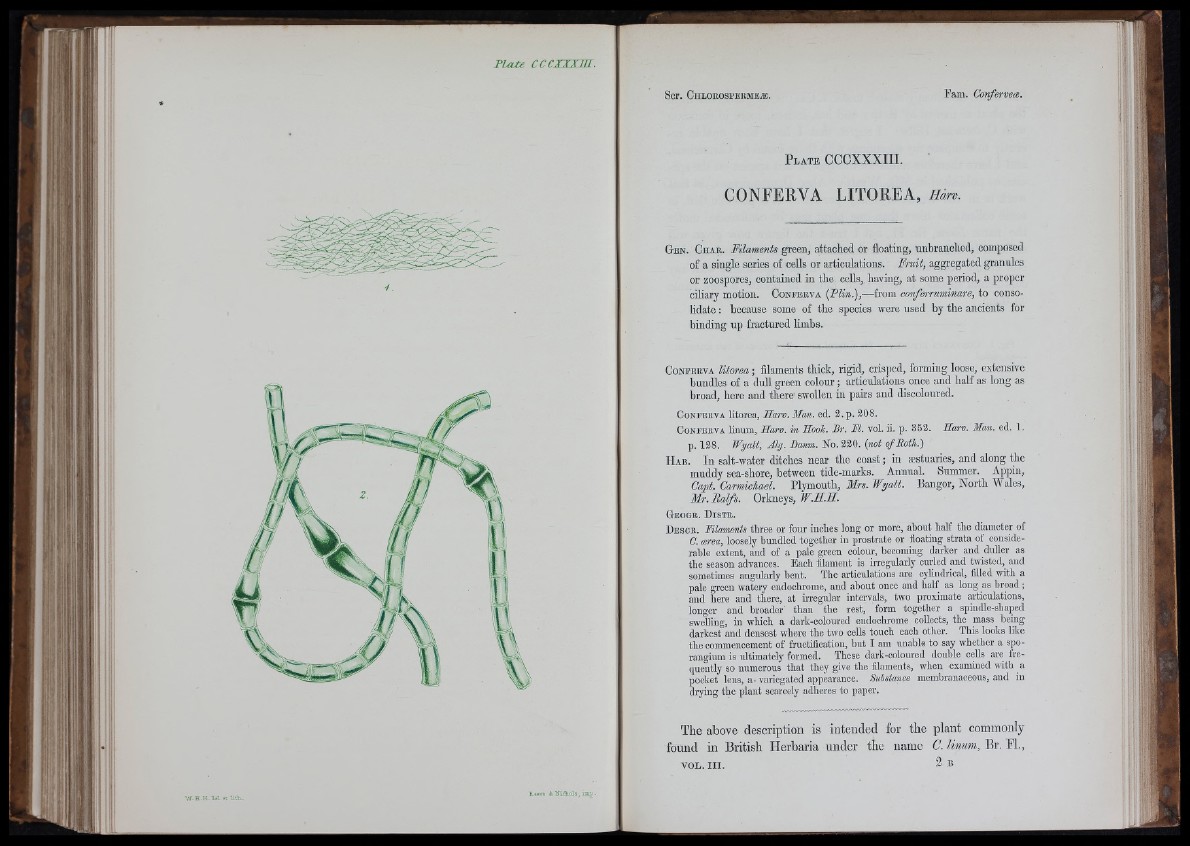
li!
u.
<05
i 'i ì
111
■ *,.ì;
i
\
y.
W. H.H. 1*1 t t IìOl.
Rtevi & Uictols, Ì3IL2; .
P l a t e CCCXXXIII.
CONFERVA LITOREA, R a w .
G e n . Ch a r . Mlaments green, attached or floating, unbranched, composed
of a single series of cells or articulations. Fruit, aggregated granules
or zoospores, contained in the cells, having, at some period, a proper
ciliary motion. Conferva {P lin .),—from conferruminare, to consolidate
: because some of the species were used by the ancients for
binding up fractured limbs.
Conferva litorea ; filaments thick, rigid, crisped, forming loose, extensive
bundles of a dull green colour ; articulations once and half as long as
broad, here and there swollen in pairs and discoloured.
C o n f e r v a litorea, Harv. Man. ed. 3. p. 308.
C o n f e r v a bnum, Harv. in Hook. Br. FI. vol. ii. p. 352. Harv. Man. cd. 1,
p. 128. Wyatt, Alg. Danm. No. 330. {not o f Both.')
H a b . In salt-water ditches near the coast; in æstuaries, and along the
muddy sea-shore, between tide-marks. Annual. Summer. Appin,
Capt. Carmichael. Plymouth, Mrs. Wyatt. Bangor, North Wales,
Mr. B a lfs . Orkneys, W.H.H.
Geogr. D is t e .
D e sc e . Filaments tliree or four inclies long or more, about half the diameter of
C. ærea, loosely bundled together in prostrate or floating strata of considerable
extent, and of a pale green colour, becoming darker and duller as
the season advances. Each filament is irregularly curled and twisted, and
sometimes angularly bent. The articulations are cylindrical, filled with a
pale green watery endochrome, and about once and half as long as broad ;
and here and there, at irregular intervals, two proximate articulations,
longer and broader' than the rest, form together a spindle-shaped
swelling, in which a dark-colourcd endochrome collects, the mass being
darkest and densest where the two cells touch each other. This looks like
the commencement of fructification, but I am unable to say whether a sporangium
is ultimately formed. These dark-coloured double cells are ire-
quently so numerous that they give the filaments, when examined with a
pocket lens, a- variegated appearance. Substance membranaceous, and in
drying the plant scarcely adheres to paper.
The above description is intended for the plant commonly
found in British Herbaria under the name C. linum, Br. FL,
'1,1 'ill
:î